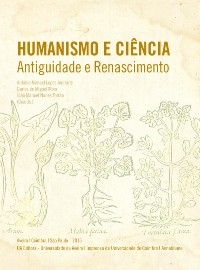Please use this identifier to cite or link to this item:
https://hdl.handle.net/10316.2/35691| Title: | As plantas na obra poética de Camões (épica e lírica) | Authors: | Paiva, Jorge | Keywords: | Camões;Poetry (epic and lyric);Plants;Camões;Poesia (Épica e Lírica);Plantas | Issue Date: | 2015 | Publisher: | UA Editora - Universidade de Aveiro Imprensa da Universidade de Coimbra Annablume |
Journal: | http://hdl.handle.net/10316.2/35685 | Abstract: | In Camões’ time, the better known plants in literature were not necessarily the edible ones, but
were rather the medicinal ones. The spices, being aromatic plants, are all included in the edible
or medicinal plants. So, the study of plants referred by Camões must be based on the botanic
knowledge of the 16th century, mainly on medicinal plants. Furthermore, as Os Lusíadas were
written, almost in their totality, in the East and centered in the Discoveries, they have their basis
on the Asian spices; in the lyric work, as it was mainly written in Portugal and centered in love
and passion, the plants referred are European and ornamental. On both works the poet rarely
refers to the same plant, but when it happens, he does it with different meanings. As Camões
lived his great passion during the thirteen years he lived in Coimbra (1531-1544), which he left
when he was twenty years old, the majority of plants referred in his lyric poems are plants from
the Mondego river fields. The same happens in the “Ilha dos Amores” of Os Lusíadas (Canto IX,
18 - 95; X, 1-143).
In a concise work, it is not possible to include the vast work of Luís de Camões. So, we will
approach some of the most uncommon plants referred in Os Lusíadas a nd p ractically a ll t he
lyric ones. Moreover, it is in Os Lusíadas that the poet refers to more plants (about fifty), mainly
Asian and aromatic. In the lyric the poet mentions less species of plants (about thirty five), mainly
European, from the countryside or ornamental. Na época camoniana, as plantas mais conhecidas e citadas na literatura, não eram tanto as plantas comestíveis ou ornamentais, mas mais as plantas medicinais. Como Os Lusíadas foram escritos, quase na totalidade, no Oriente e centrados nos Descobrimentos, têm como base plantas asiáticas, particularmente especiarias e medicinais; a Lírica como foi, maioritariamente, escrita em Portugal e centrada no amor e paixão, as plantas referidas são europeias e ornamentais. Numa e noutra obra o poeta raramente cita as mesmas plantas, mas quando isso acontece, fá-lo com significados diferentes. Como Camões viveu a sua grande paixão durante os treze anos que esteve em Coimbra (1531-1544), de onde partiu aos vinte anos, a maioria das plantas referidas na Lírica são plantas dos campos do Mondego. O mesmo acontece n’Os Lusíadas nos episódios da “Ilha dos Amores” (Canto IX, 18 – X, 95) e de “Inês de Castro” (Canto III, 118-135). Num trabalho sucinto, não é possível abranger a vasta obra completa de Luís de Camões. Assim, abordaremos algumas das plantas mais invulgares referidas n’Os Lusíadas e praticamente todas as citadas na Lírica. Aliás, é n’Os Lusíadas que o poeta mais plantas menciona (cerca de cinco dezenas), na maioria asiáticas e aromáticas. Na Lírica refere muito menos espécies de plantas (cerca de três dezenas e meia), maioritariamente, europeias campestres e ornamentais. |
URI: | https://hdl.handle.net/10316.2/35691 | ISBN: | 978-989-26-0941-6 (PDF) | DOI: | 10.14195/978-989-26-0941-6_5 | Rights: | open access |
| Appears in Collections: | Humanismo e Ciência: Antiguidade e Renascimento |
Files in This Item:
| File | Description | Size | Format | |
|---|---|---|---|---|
| humanismo_e_ciencia_-_1.5.pdf | 6.02 MB | Adobe PDF |  |
Items in DSpace are protected by copyright, with all rights reserved, unless otherwise indicated.
